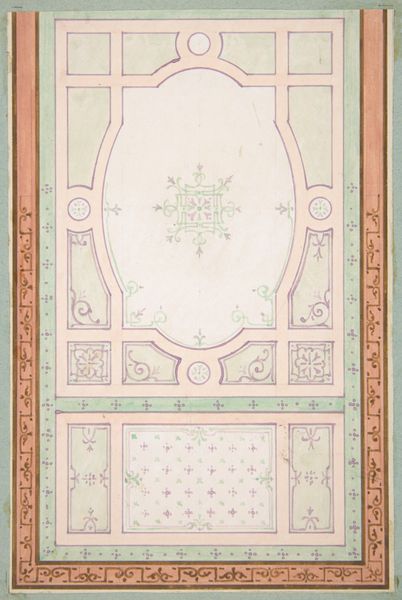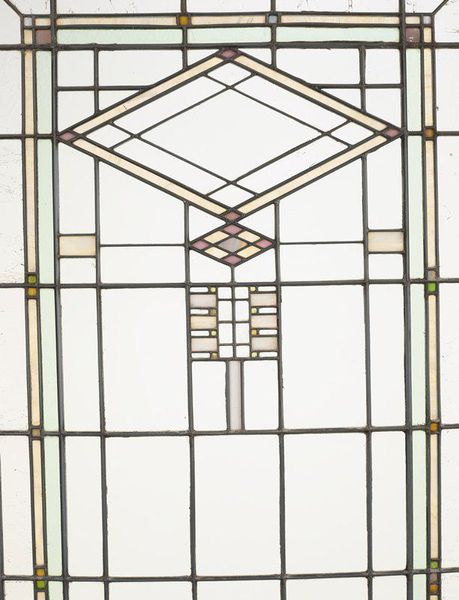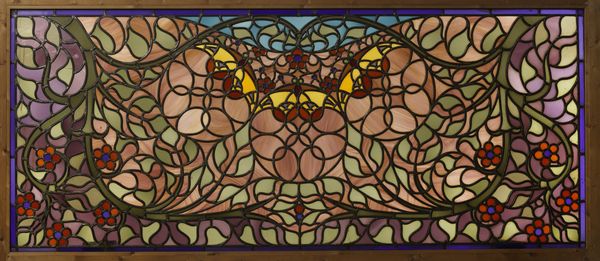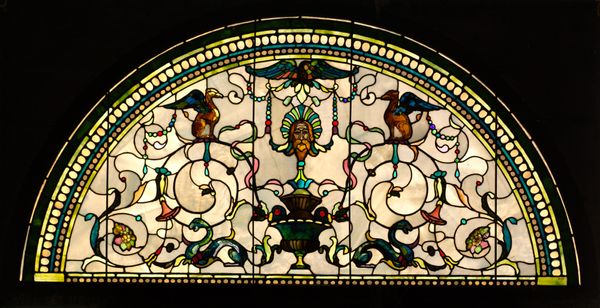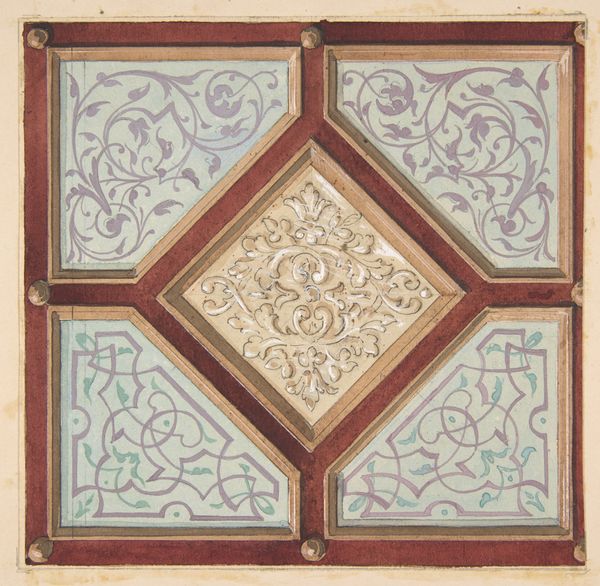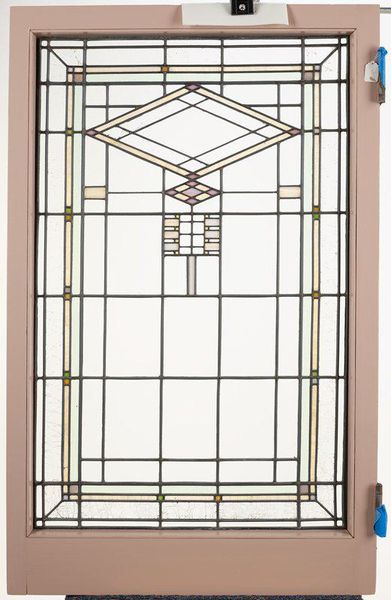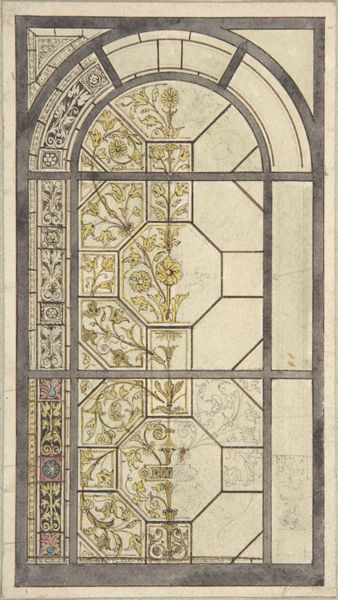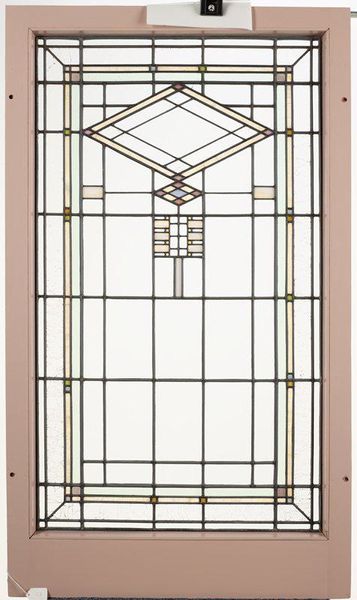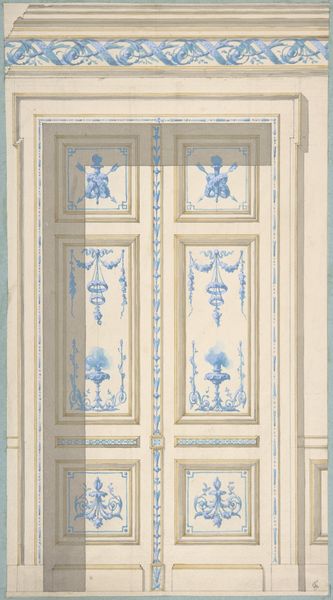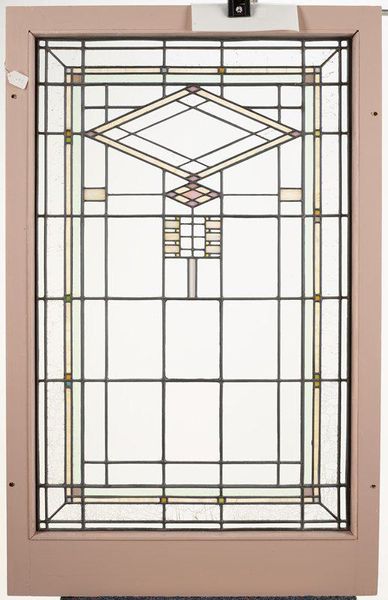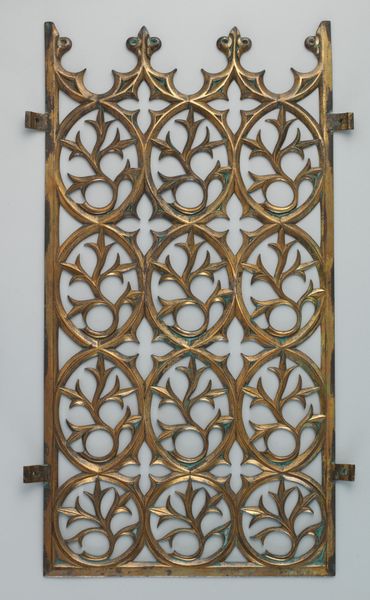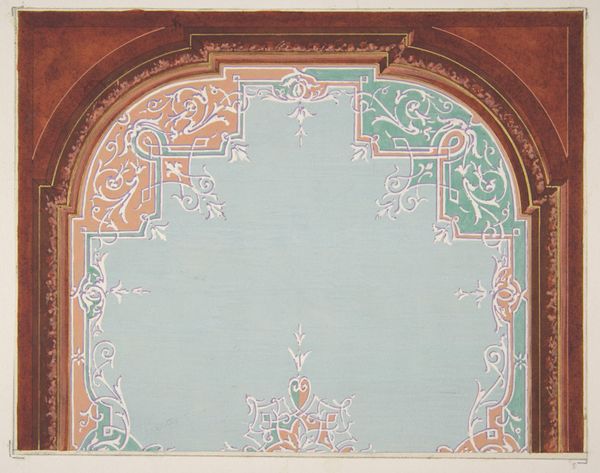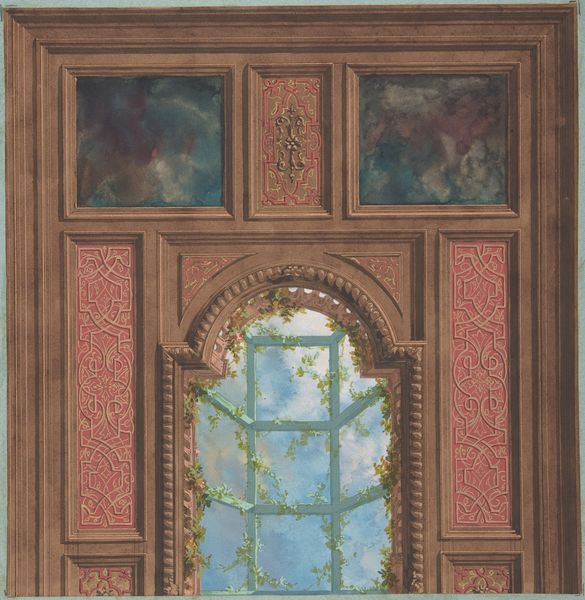
glass, architecture
art-nouveau
form
glass
line
decorative-art
stained glass
architecture
Dimensions: 50 1/4 x 34 x 2 1/8 in. (127.64 x 86.36 x 5.4 cm)
Copyright: Public Domain
Curator: Immediately, this window whispers of tranquil gardens, maybe glimpsed from a shaded courtyard. There's a beautiful lightness despite the formality of its structure. Editor: This window, titled "-Persian Arabesque- window," was crafted by John La Farge around 1882. It resides here at the Minneapolis Institute of Art and showcases La Farge’s mastery of stained glass. Curator: Indeed, that mastery is evident. The arabesque design, a swirling tapestry of stylized botanical forms, adheres to a rigorous symmetry. Notice the meticulous layering, the precise mirroring that lends an almost meditative quality. The interplay of green and white—isn’t that particularly effective? It shapes our understanding, influencing its depth with its decorative power. Editor: Let's also consider the craft of stained glass itself, involving intense labor, the sourcing of the materials, the physical act of cutting, shaping, and soldering these colored segments together to realize such design. It's a complex assembly. I find myself drawn to the opaque whites and am also struck by the darker border and the effect those small flowers have on the work overall. Curator: Precisely. It’s as much about structure and form, line and layering, as it is light and material. I feel this intense dialogue, pushing our minds to discover the truth of design at play here. This arabesque design, far from being merely ornamental, generates form itself through the application of the colored segments and, of course, the intentional transmission and filtering of light. This interplay is also at work between that rich green and subtle gold that is reminiscent of medieval traditions. Editor: It really makes you consider how a window such as this would be produced, distributed, sold. Who would have owned something like this? It's tempting to think only of the beauty and light, but it also reveals much about the societal values and consumption practices during the late nineteenth century. Curator: Perhaps we might suggest a further observation on how this symmetry creates balance between chaos and control that La Farge understood with precision, through his visual, material knowledge. Editor: A window into another world, maybe, but also reflecting back on the means and meanings that formed it.
Comments
Join the conversation
Join millions of artists and users on Artera today and experience the ultimate creative platform.
